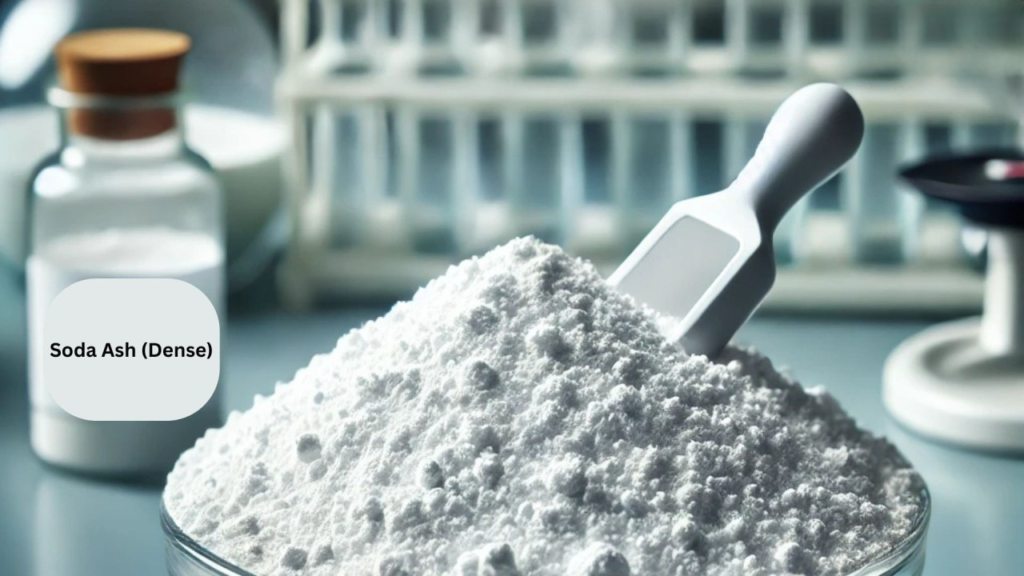
Soda Ash Dense, as a basic chemical raw material, is widely used in industries such as glass manufacturing, detergents, metallurgy, and food processing. The price trend is already fluctuating due to multiple factors such as supply and demand, upstream raw material costs, policy regulation, and the global economic environment.
Soda Ash (Dense) Market Overview
Soda ash (dense), chemically known as sodium carbonate (Na₂CO₃).Due to its high density, high purity, and good chemical stability, it is an indispensable basic chemical raw material in industrial production and is widely used in:
Glass manufacturing
flat glass:Used for construction, automobiles, household appliances, etc;
Photovoltaic glass:With the acceleration of global energy transition, the demand for photovoltaic glass has surged, becoming a new growth point for soda ash consumption;
Glassware:Bottle glass, vessel glass, etc. rely on the chemical stability of soda ash.
Detergents and cleaning products
Washing powder/detergent:As a substitute for some phosphates as an additive, it conforms to the trend of environmental protection policies;
Industrial cleaning agents:Used for metal surface treatment, equipment descaling and other scenarios.
Chemical and Metallurgical Engineering
Chemical Intermediate:Important raw materials for producing baking soda (sodium bicarbonate), sodium silicate (water glass), sodium nitrate, etc;
Metallurgical Industry:Used for desulfurization, dephosphorization in ore smelting, and purification of alumina from bauxite (Bayer process);
battery material:Synthesis of Sodium Carbonate as Positive Electrode Material for Lithium ion Batteries (such as Lithium Iron Phosphate).
Environmental Protection and Water Treatment
flue gas desulfurization:Soda ash solution is used for the absorption of sulfur dioxide (SO ₂) in coal-fired power plants and steel plants, generating sodium sulfate as a byproduct;
waste water treatment:Neutralize acidic wastewater and precipitate heavy metal ions (such as lead and cadmium).
extile and Printing and Dyeing
Fiber processing:Soda ash is used for silk polishing treatment of cotton fibers to enhance fabric luster and dyeing performance;
Printing and dyeing auxiliaries:Adjust the pH value of the dye solution to improve the dye adhesion rate.
Food and Medicine
food additives:Adjust pH value, used as an improver for noodles, Mantou and other flour products, or as an acidity regulator;
Drinking water treatment:Neutralize acidic water quality and improve taste;
pharmaceutical excipients:Used for cleaning antacids, buffering agents, and medical devices.
The pricing of soda ash (dense) is influenced by factors such as raw material availability, energy costs, environmental regulations, and trade policies. Procurement Resource provides a comprehensive analysis of these price movements and their impact on different industries.
Latest Price Trends and Market Analysis Table
| category | Data/Trends |
| Global price range | China: 1120-1700 yuan/ton (industrial grade) India: 350-450 dollar/ton (approximately 2450 dollar/ton)-3150 yuan/ton) United States: $200-300/ton (approximately $1400)-2100 yuan/ton) |
| Regional price differences | Qinghai, China: 1120 yuan/ton (concentrated production capacity)Low cost) East/South China: 1500-1700 yuan/ton(High transportation costs) Vietnam import price: 1300-1400 US dollars/ton(2023 data) |
| Driving factors of price fluctuations | Upward factors: Growth in demand for photovoltaic glass (Compound Annual Growth Rate exceeding 2025)15%) Environmental protection policies restrict production (Henan and Shandong production capacity affected)Limited) Downward factors: China’s overcapacity (expected to reach 35 million by 2025)Ton) Energy cost fluctuations (impact on coal prices) |
| Price difference between industrial grade and food grade | Industrial grade: 1200-1600 yuan/tonFood grade: 1800-2000 yuan/ton (premium)20%-30%) |
| Short term forecast (within 2025) | Vibration range: 1400-1700 yuan/ton (China) Seasonal rebound (Second Quarter glass industry stocking) may push up to over 1.700 yuan/ton |
| Medium and long-term trends(2026-2030) | Annual growth rate: 3% -5% (driven by demand for photovoltaic glass and new energy batteries) Risk: Capacity integration and cost pressure of low-carbon technology |
The soda ash (dense) market has experienced price volatility due to:
Supply Chain Disruptions:
Global logistics issues, port congestion, and energy price fluctuations have impacted the cost structure.
Raw Material Prices:
Variations in the availability and cost of trona ore and synthetic production inputs have influenced pricing trends.
Industrial Demand:
Growth in construction, automotive, and detergent industries has driven demand, affecting price dynamics.
Regulatory Policies:
Environmental policies impacting soda ash production, such as carbon emission limits, have altered production costs.
Investment and Strategic Suggestions
Procurement strategy:
•Pay attention to regional price arbitrage opportunities (such as the North American to Asian export window), and use real-time data systems to monitor port inventory and logistics costs.
•Lock in long-term contracts to hedge against short-term fluctuations, especially in high growth areas such as photovoltaic glass.
Capacity layout:
Layout distribution networks in demand hotspots such as Southeast Asia and India to avoid trade barriers.
Risk management:
Establish a multi-source supply system (such as combining natural alkali and synthetic alkali procurement) to reduce geopolitical and policy risk impacts.
Summary of Key Regional Trends
| region | Core opportunities | Main risks |
| North America | Low cost export to emerging demand in the Asia Pacific region | International competition intensifies, squeezing profit margins |
| Europe | The demand for upgrading photovoltaic glass technology | Energy transition drives up production costs |
| Asia-Pacific | Industrialization in India and the Transfer of Southeast Asian Industrial Chains | China’s overcapacity triggers price war |
| Middle East and Africa | Infrastructure investment drives short-term demand | Rising geopolitical risks |
| Latin America | The return of manufacturing industry helps promote localized production | Currency fluctuations weaken import capacity |
Optimization highlights:
Data anchor point:
Supplement quantitative indicators such as production capacity, cost, and growth rate to enhance the credibility of conclusions.
Industrial chain linkage:
Revealing the impact mechanism of downstream industries such as photovoltaics and real estate on the demand for soda ash.
Risk Opportunity Matrix:
Table induction helps quickly locate the investment value of a region.
Geopolitical perspective:
Incorporating macro factors such as nearshore outsourcing and international logistics to meet the strategic decision-making needs of enterprises.
Conclusion
By integrating real-time data and deepening industry chain analysis, market participants can capture structural opportunities amidst fluctuations, achieving cost optimization and controllable risks.
